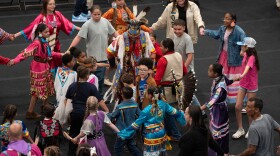Seven of North Carolina's eight state-recognized American Indian tribes are receiving historical markers to create more awareness of their existence. Last month, the North Carolina Highway Marker Commission approved applications from those tribes to put nine historical markers on highways.
"So, it kind of creates that connection between the contemporary existence of the tribe and the historical existence of that tribe," said Kerry Bird, the director of the North Carolina American Indian Heritage Commission. "So it's kind of tying the two together."

The Eastern Band of Cherokee Indians was the only tribe that did not apply for a historical marker. Bird said they can still submit their application later in the year for the next round of approvals.
"Some tribes, like the Lumbee, or the Haliwa-Saponi Tribe, or the Coharie, [will have] their signage in front of their tribal headquarters," Bird said. "But for people like the Sappony Tribe, the Occaneechi Tribe of the Saponi Nation or the Meherrin Tribe, … their markers will give locations to where their tribal headquarters are."
In addition to the seven tribes, East Carolina Indian School (ECI) — an American Indian school in Sampson County — and an Indian burial mound in Robeson County were also approved for highway historical markers.
The markers will be ordered in October and installation ceremonies for several of the markers will take place throughout November, which is Native American Heritage month.







